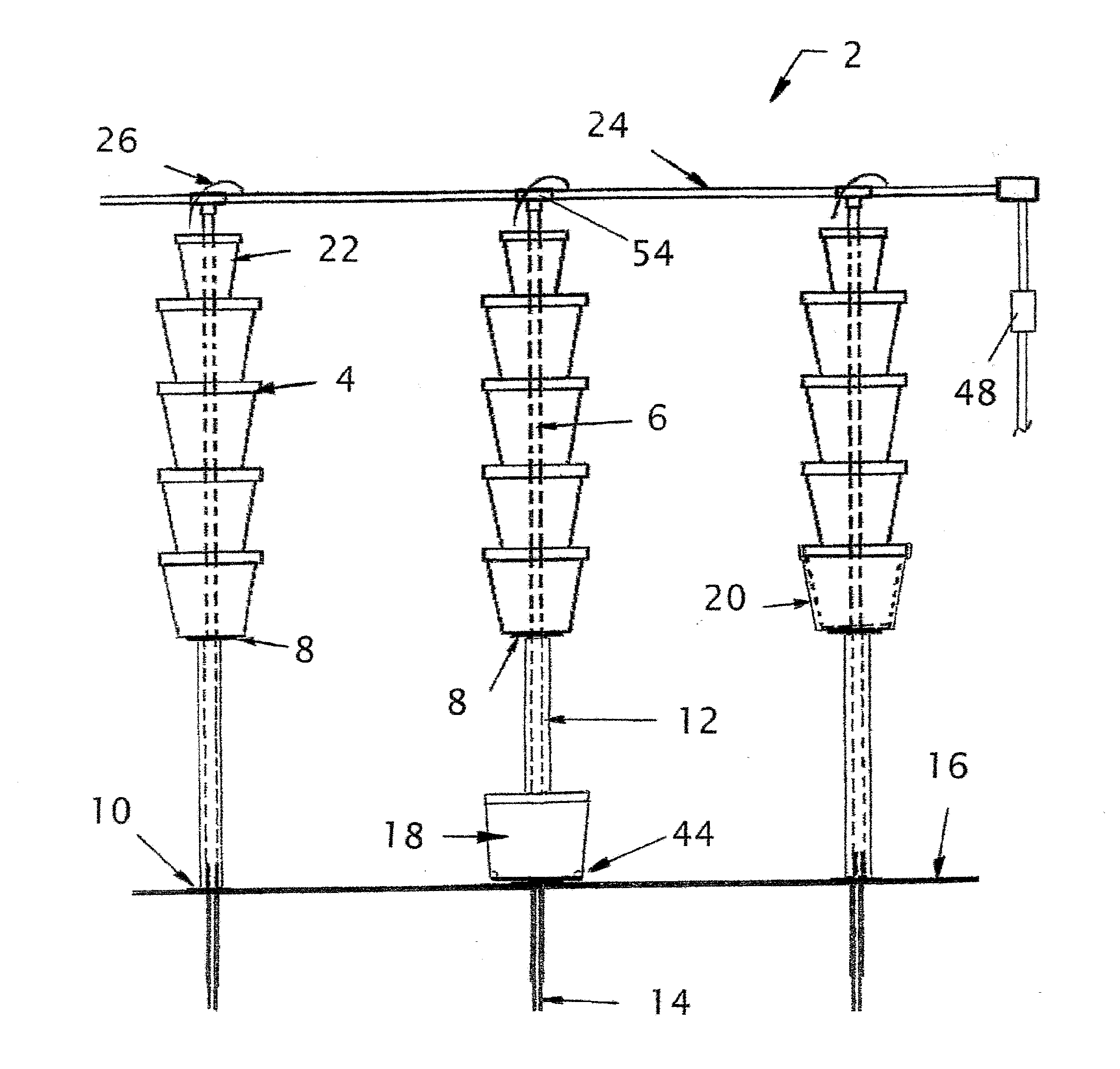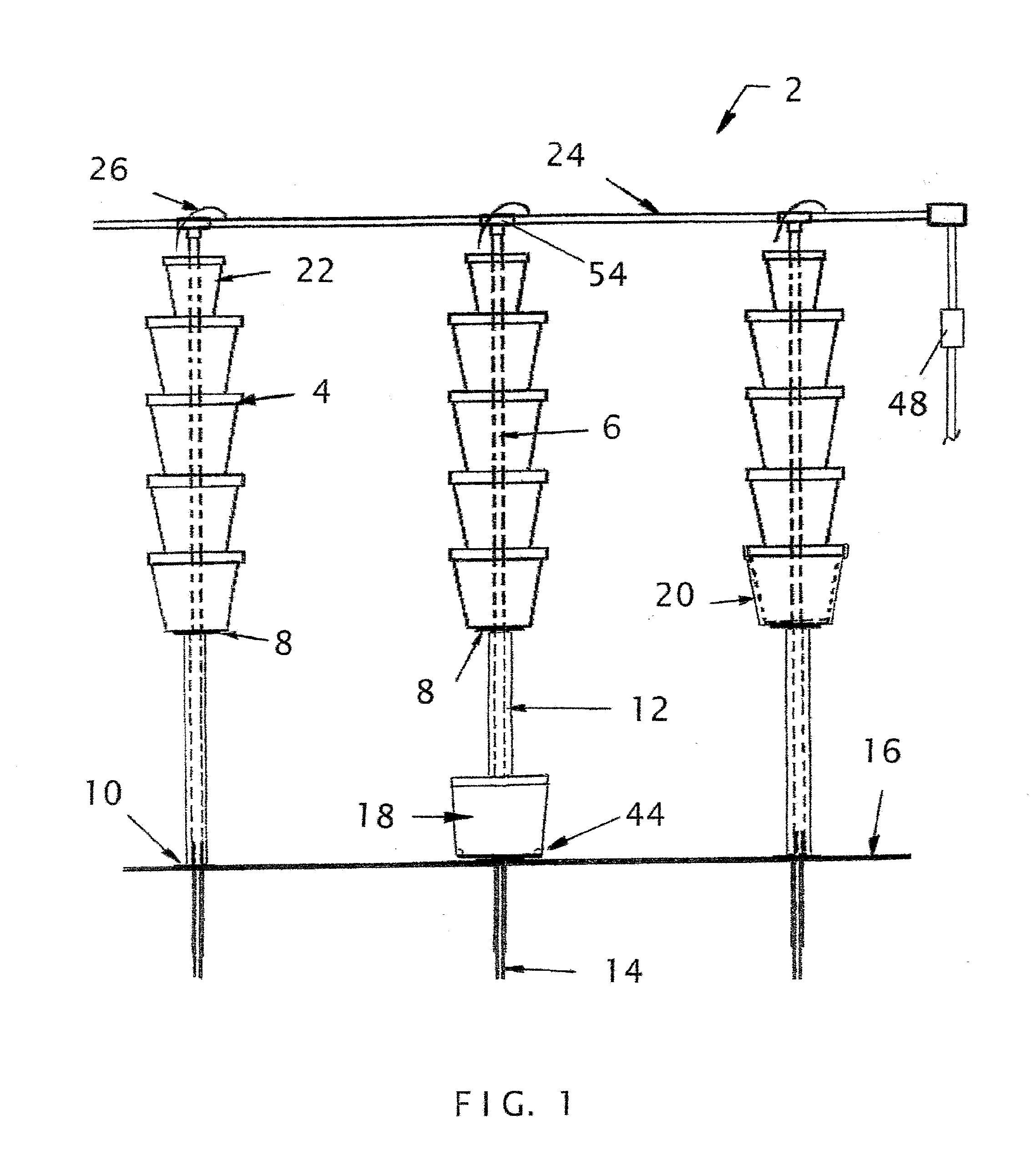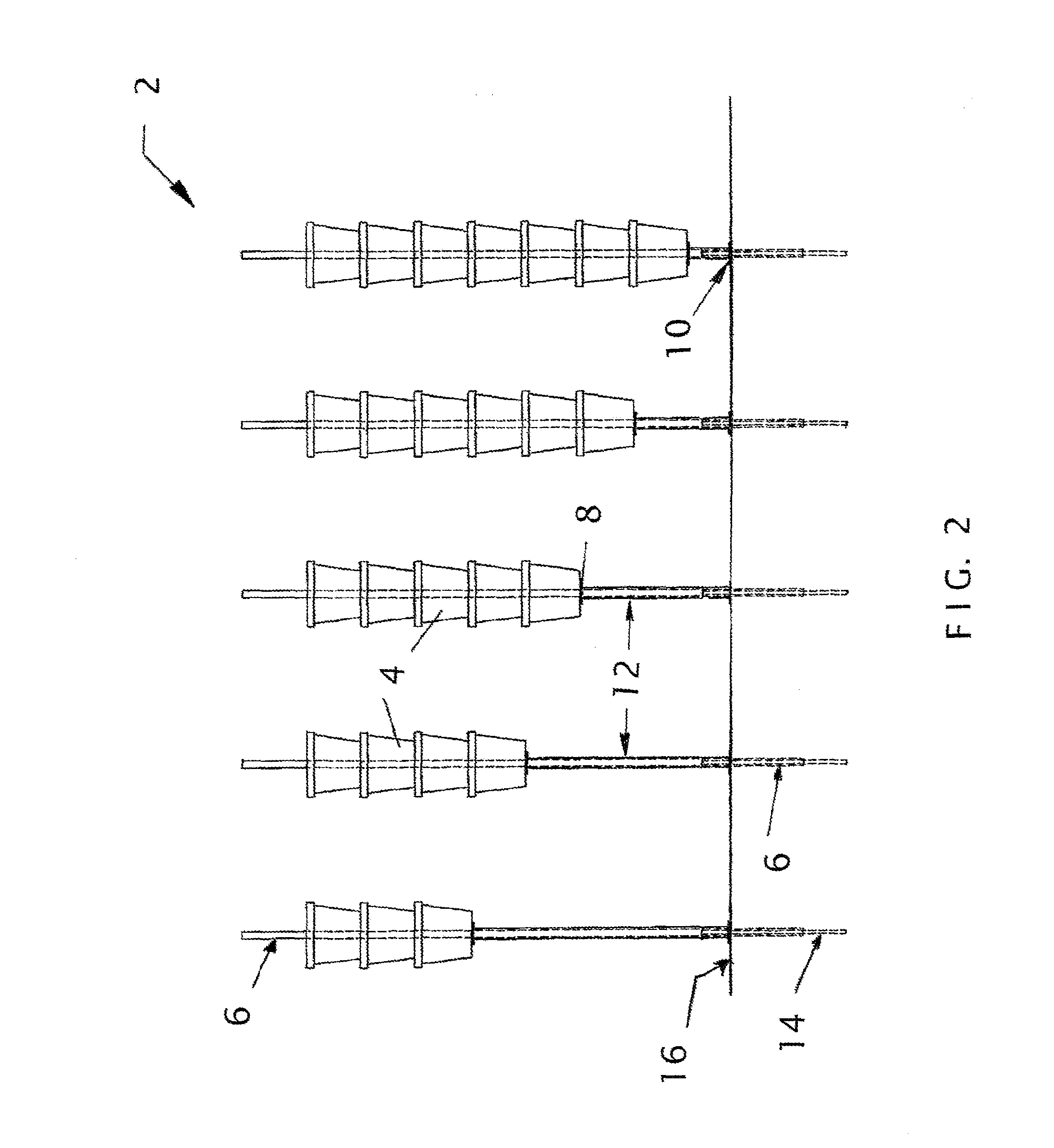Tower Planter Growth Arrangement and Method
- Summary
- Abstract
- Description
- Claims
- Application Information
AI Technical Summary
Benefits of technology
Problems solved by technology
Method used
Image
Examples
Embodiment Construction
[0063]The present invention provides a new design for growing pots 4 used in vertically-extending tower growth assemblies 2 (also referred to herein as towers 2), as well as a new and versatile vertical stacking arrangement for growing pots 4 into towers 2 that maximizes crop production while keeping costs at a sufficiently reduced level to make it commercially viable with in-ground farming techniques for growing a wide variety of plants and crops (not shown). Improvements in commercial applications (that result from changes to growing pots 4, rotation plates 8, and support pipes 6) allow present invention towers 2 to be constructed about 15-inches taller than prior art columns, which increases yields in the production of some plant / crop to levels that make tower 2 use a financially-competitive alternative. However, in the production of certain crops, such as strawberries, yields increase with the use of low towers, which may have only three stacked growing pots 4. In addition, smal...
PUM
 Login to View More
Login to View More Abstract
Description
Claims
Application Information
 Login to View More
Login to View More - R&D
- Intellectual Property
- Life Sciences
- Materials
- Tech Scout
- Unparalleled Data Quality
- Higher Quality Content
- 60% Fewer Hallucinations
Browse by: Latest US Patents, China's latest patents, Technical Efficacy Thesaurus, Application Domain, Technology Topic, Popular Technical Reports.
© 2025 PatSnap. All rights reserved.Legal|Privacy policy|Modern Slavery Act Transparency Statement|Sitemap|About US| Contact US: help@patsnap.com



